“How to sew a button on” sounds better to me, but then I’d be ending my title with a preposition.
Does that even matter in a title? This title is a fragment, after all.
Anyhoo!
Today’s topic has been requested by several readers. Because my mom taught me how to sew when I was a kid, doing a post on button-sewing would not have occurred to me (I live in a “Hasn’t everyone been taught how to sew?” bubble, apparently).
So, it’s lovely that you guys send in requests, because I do love to write posts that meet your needs.
Reattaching errant buttons is a skill every frugal person should have in their repertoire…it’s one of the simplest but most often needed mending tasks, and if you can sew a button on properly, you can greatly extend the useful life of your clothes.
You’ll need some thread, a sharp needle (not the blunt sort used for cross-stitching), and some scissors.
And the button.
But you knew that, right?
Cut a length of thread, thread it through the eye of the needle, and tie the loose ends together with a knot or two. This gives you a double thickness of thread and prevents the thread from coming out of the needle.
Find the appropriate spot for the button. There should be some markings left by the previous stitches.
Starting from the underside of the clothing, push the needle up through one of the button holes and down through another, repeating until the button looks securely attached. If your button has two sets of holes, stick with doing just one set of stitches for now (more on that later).
If your button only has two holes, your stitching pattern will be obvious, but if it’s got four holes, you can either do two parallel vertical sets of stitches, or you can use a cross-stitch pattern. If there are multiple buttons on the garment, just do what matches the other buttons.
To keep my stitches secure, when I’m done sewing, I run the needle through the back of the fabric, making a loop, and then run the needle through the loop, making a knot. I usually do two of these knots, just to be on the safe side.
Now, to make very certain you don’t lose your button, finish one set of stitches, tie the thread off, clip it with a scissors and then do the other set of stitches with a new thread.
This way, even if one set of stitches comes loose, the other side won’t unravel too, and the button will still be attached to your clothing item.
So, that’s all there is to it! Don’t let another perfectly good item of clothing sit unused for lack of a button…you can totally do this.
By the way, if you’re new to sewing, you may not have a huge stash of thread sitting around your house, and so it may be a little bit tricky to find a color that matches. Thread is surprisingly pricey (several dollars for a spool at Michael’s), so you probably won’t want to run out and buy every color under the sun.
I’d suggest keeping white, black, and tan thread around as those will meet most of your button-sewing needs. Also, sometimes you can find affordable little mending kits at craft stores and those often have a nice assortment of colors on small spools.
Keep in mind that if the button won’t actually be showing much, the thread doesn’t have to be a perfect match. I didn’t have the appropriate green thread for this button, but since it’s on the waistband of a skort and I never tuck my shirt in while wearing it, a slight color difference wasn’t a big deal.
Do any of you experienced menders have button-sewing tips to add to mine?
___________________________
Today’s 365 post: A fish, of course.
Joshua’s 365 post: Fortune-Teller

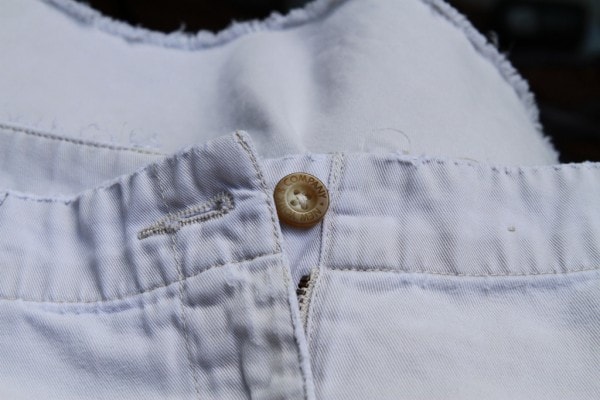
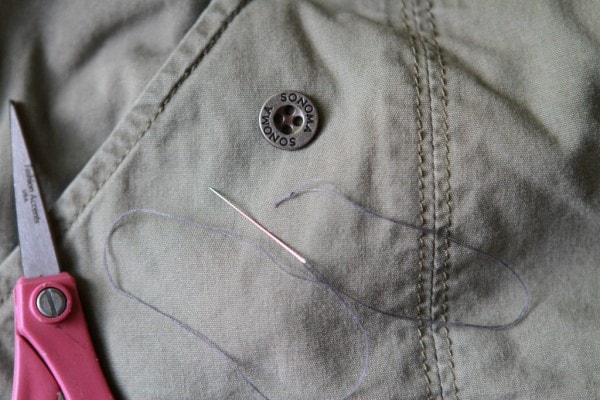
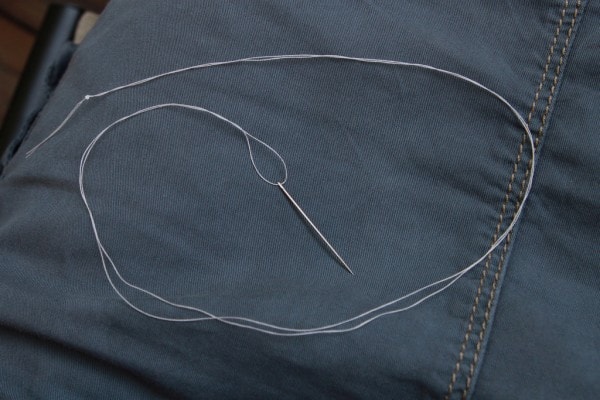
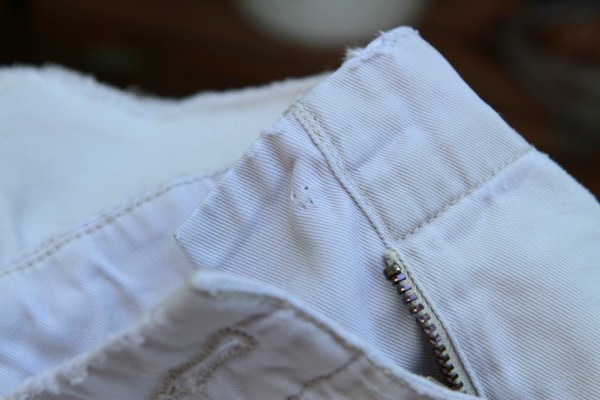
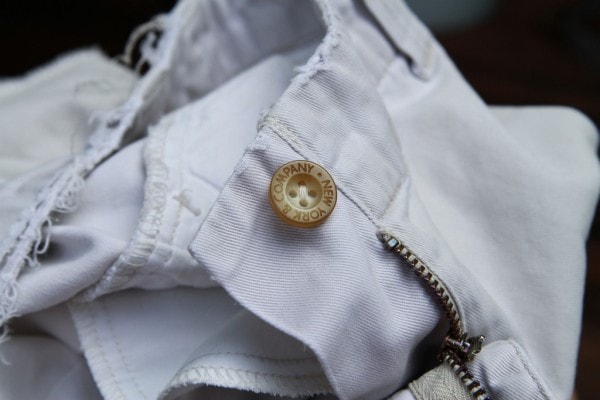
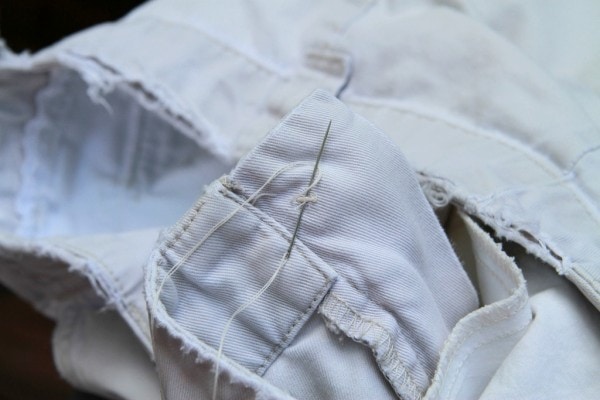
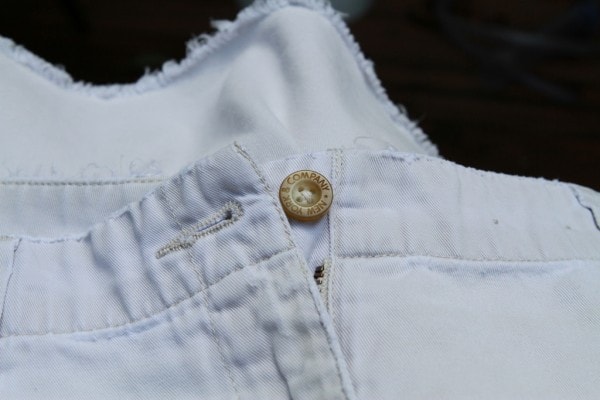
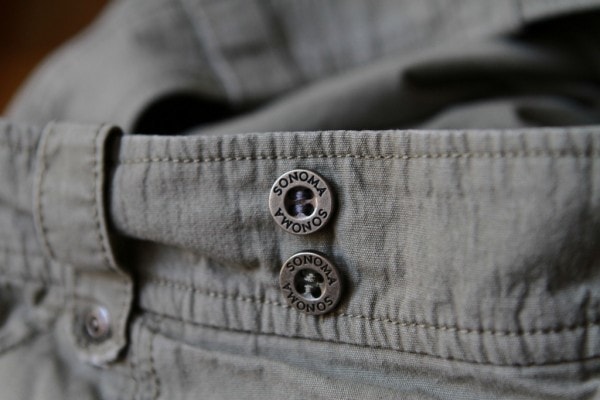
Sheree' Neumann
Friday 25th of September 2015
I have gone to fabric stores to find the unusual replacement zippers. Some stores can actually special order length, color and type of zipper. I have ordered several of these and they haven't been over priced. They even ship directly to your home. Some places sell zipper repair kits, but they only repair the zipper pull.
Hope this helps!
Anusha
Monday 23rd of June 2014
Kristen, Can you suggest a store where I can find Zippers for winter jackets?? We have been looking around in craft stores without success. My daughter's winter jacket is quite new except for the broken zipper which is beyond repair. Thanks, Anusha
BachelorEngineer
Friday 21st of March 2014
I am one of those poor bachelors who has to learn it all himself. Gotta say, this really helped me out. Combined with the comments (shank wrapping method, hidden knot, and no-knot starting stitch) and a paper on Buttons and Buttonholes from the UKY university I stumbled upon, I will now conquer the world! Thanks for this post.
mike
Wednesday 17th of October 2012
if i sew the button on my pants closer to the edge does that make my pants a little bigger?
Kristen
Wednesday 17th of October 2012
Yes, at least the waistband will be a bit bigger.
pewa
Friday 19th of August 2011
One other thing I might add is two ways to hide the beginning knot. You can either start sewing on the button on the right side of the garment, take a tiny stitch where the button is to be sewn and then string the button on the needle and sew the button on as you describe. You can also loop the thread through the buttonholes and secure the button on the thread before putting the button on the garment, and you begin sewing the button on the right side of the garment with this method also. When I took garment sewing in college (Home Economics major) we were graded down for having the knots showing, so it has become a habit. Also I do the thread shank when sewing on all buttons, if done this way the button will not come loose.